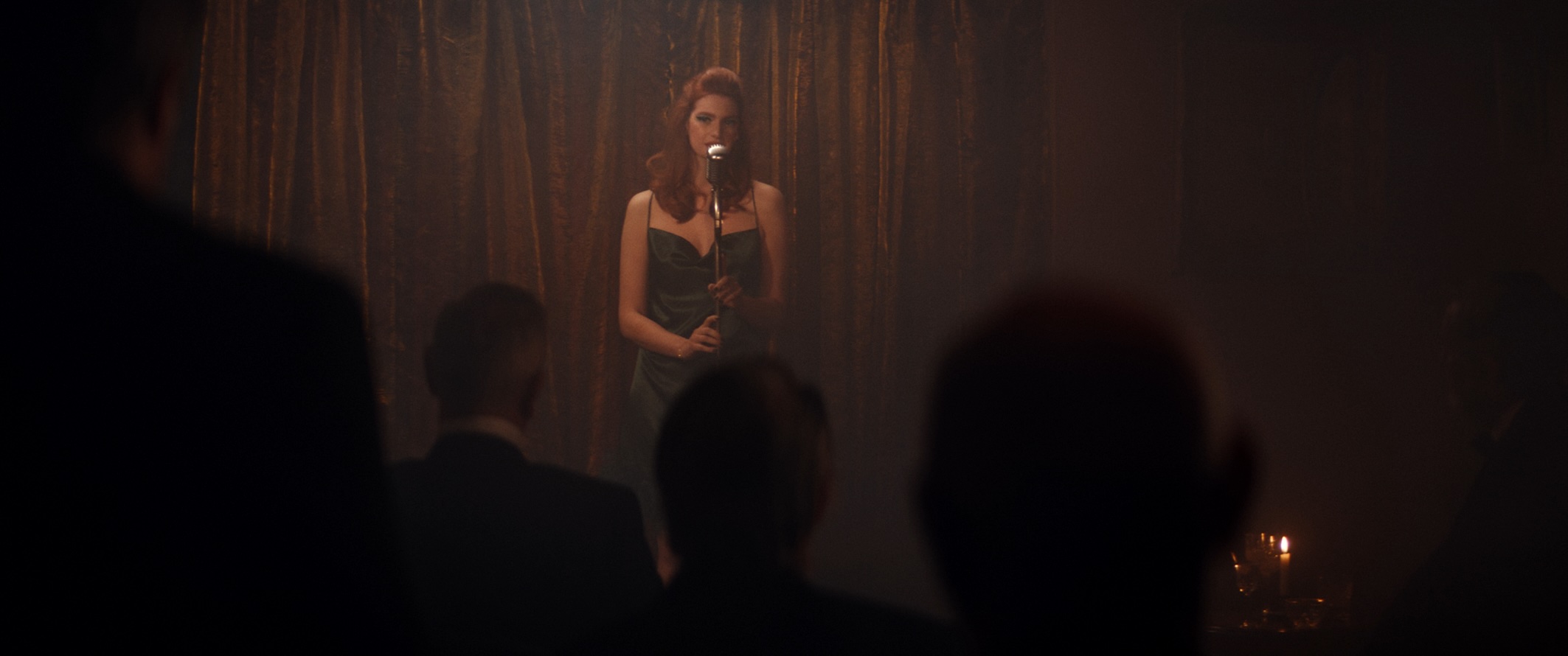POPPY’S SATURN
dir. Nicole Tegelaar

Dreamlike and surreal, “Poppy’s Saturn” pulls one by the hand into a whirlpool of vivid symbolism, vibrant colours, and madness. The short film begins with nightclub singer Poppy, who is unable to continue with her performance after the appearance of “the black-eyed man.” She must face and accept herself as she sets out on a journey of acceptance, self-redemption, and identity. Nicole Tegeelar redefines conventional storytelling by crafting horror rooted in the character’s personal journey. This representation of horror in film highlights Poppy’s inner struggles, as well as the external horrors she comes across. As the plot rolls out, one is invited to share in the experience, observe and participate, not to sit back and watch. The uncertainty of new situations is mirrored in the viewer, just as it is in Poppy.
We join Poppy in her search for answers and are performers in Madame Rose’s house (and theatre) alongside her and the women. There is no escape from the stage, even the viewers are not exempt from it. Even in total deconstruction, it is still a play. As the stage collapses, her roles blur, becoming both performer and character. In Madame Rose’s house, reality fades. The descent into madness begins.
The pervasive use of pink hues in the house and the pink, glittery tint in the dream-like sequences contribute to the overall surreal quality of the film. Despite their prominence, the colours are muted, subtly reinforcing femininity and dreaminess. The cinematography brings colours to life. Colours bounce on the main character’s body, encasing her within the dreamworld and ushering her into it.
The turning point in Poppy’s journey comes when she takes the black-eyed man’s eyes. In this scene, rather than showcased by action, it is represented by colours—a bursting red hue overshadows the violence, after which we see his gouged-out eyes in her hands. By taking his eyes, she takes control of the narrative. This part of the film explores sexual traumas and the male gaze, where oftentimes the victim loses control and body agency. Watching the film, the viewer might find themselves asking if this is intentional. Does the symbol of performance allude to the almost performative roles of females under the male gaze? If there is estrangement, is it perhaps from the self?
Like the use of colours, the use of the article “the” is intriguing. The article often implies specificity, and the use of this article in “the black-eyed man” highlights the same; regardless of whether it is interpreted as a representation of past trauma. The use of “the” makes the black-eyed man less of an anonymous figure and more of a physical representation of Poppy’s trauma. She begins transitioning in Madame Rose’s house under the female gaze rather than the male gaze—a subversion of the initial first all-men audience. Here, she drops her coat, her heels, her tights, and confronts herself. The shedding of these articles of clothing mirror the rejection of roles imposed on her, and women in general.
Marie Van Onvegal’s performance as Poppy gives life to the character. Her movements and actions are akin to a teasing dance. Every turn and gesture appear to be intentioned and breathtakingly powerful, and the viewer can only watch with impassioned amazement. This film is a testament to her brilliance as an actress. The intentionality of each symbol is laudable. Layered intricately, each symbol and image builds upon the last. To become, Poppy has to first lay down and surrender what she is—substitute her softness and vulnerability for the coarseness of a rose’s thorn, and accept the madness as defiance against the perceived softness of femininity. Only by surrendering her perceived softness does Poppy become powerful enough to defeat the black-eyed man.
Through “Poppy’s Saturn,” viewers are invited to surrender their expectations and be part of the experience. It is a film that will haunt its viewers after completion.
Sunmisola Odusola writes on existence, love, and death, and daydreams about making surrealist art someday. They were shortlisted for DKA Poetry Prize (2024), and have had their works published in Backwards Trajectory, Brittle Paper, Fiery Scribe Review, Witcraft, Bloodletter Magazine, MockingOwl Roost, and Eunoia Review. They enjoy playing Mahjongg, Scrabble, talking about Anais Nin and Salvador Dali, and learning new things to fill the void. For fun, they create playlists, save Tumblr posts, and watch sitcoms.
